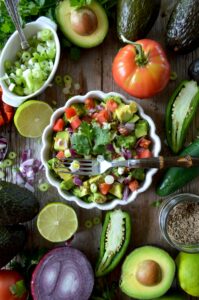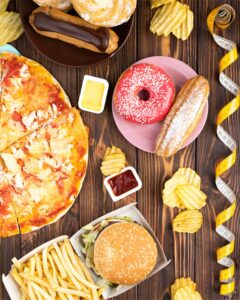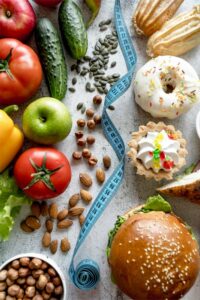Decoding Ultra-Processed Foods: A Guide to Healthier Eating Habits
‘Transform your plate, transform your health’
Although regularly eating ultra-processed foods like chips, microwave meals, candy, and chicken nuggets is not a healthy diet, processed food is not all bad. Processing foods means changing its natural state to prolong its shelf life, make it safe to store or eat, enhance its taste, or even increase its nutritional value. Methods like pasteurizing, canning, fermenting, freezing, and drying foods are forms of processing. When a food is ultra-processed, it means that the producer uses industrial-scale methods and ingredients that you may not recognize and would not use in home cooking to produce the final product.
A system was introduced in 2009 to classify processed foods as it is helpful to differentiate between the various degrees of food processing. It is called the NOVA classification (Monteiro et al., 2017) and it lists four categories detailing the degree to which a food is processed:
- Unprocessed or minimally processed foods: Unprocessed foods include the natural edible food parts of plants and animals. minimally processed foods have been slightly altered for the main purpose of preservation but which does not substantially change the nutritional content of the food. Examples are many fresh fruits, vegetables, whole grains, nuts, meats, and milk.
- Processed culinary ingredients: Food ingredients derived from a minimally processed by pressing, refining, grinding or milling. Examples include oils from plants, seeds and nuts, or flour and pastas formed from whole grains.
- Processed foods: Foods from the above groups that have added salt, sugar, or fats. Examples are some canned fruits and vegetables, some cheeses, freshly made bread, and canned fish. These foods are usually made from at least 2-3 ingredients and can be readily eaten without further preparation.
- Ultra-processed foods: Also often referred to as ‘highly processed foods’, these are foods from the prior group that go beyond the incorporation of salt, sweeteners, or fat to include artificial colors and flavors and preservatives that promote shelf stability, preserve texture, and increase palatability. They are typically ready-to-eat with minimal additional preparation. Examples are sugary drinks, cookies, some crackers, chips, and breakfast cereals, some frozen dinners, and luncheon meats.


We are going to focus further on ultra-processed foods as these foods impact our health the most in a negative way.
Studies on ultra-processed foods
- In a study by Schnabel et al. (2019), more than 40,000 French adults were investigated for 7 years to examine whether high consumption of ultra-processed food is associated with an increase in overall mortality risk. It was found that a 10% increase in the proportion of ultra-processed food consumption was statistically significantly associated with a 14% higher risk of all-cause mortality. This means that an increase in ultra-processed food consumption may be associated with an overall higher mortality risk.
- Another large study of over 100,000 French adults followed over 5 years showed that eating more ultra-processed foods was linked with a greater risk of heart disease (Srour et al., 2019). A similar analysis of the same participants also found that a 10% increase in ultra-processed food consumption was linked with a 12% higher risk of cancer (Fiolet et al., 2018).
- One clinical trial studied what happened when participants ate ultra-processed food in detail. The scientists asked 20 people to live in a dedicated clinical trial unit for 4 weeks. They presented the participants with either ultra-processed or unprocessed diets for 2 weeks, immediately followed by the alternate diet for 2 weeks. The volunteers could eat as much or as little as they liked. The researchers found that the participants who ate the ultra-processed diet consumed roughly an extra 500 calories a day, compared with those eating the unprocessed diet. This led to an average weight gain of 2 pounds in the 2 weeks that the volunteers ate the ultra-processed food (Hall et al., 2019). Aside from weight gain, scientists believe that ultra-processed foods also affect gut health. This could be because ultra-processed food often lacks fiber, which plays an essential role in keeping your microbiome healthy.
The longer the ingredients list, the more highly processed a food is!
Decoding food labels
Being aware of specific ingredients in a food is a good general practice for everyone. When scanning the ingredients listing on a food package, consider the following:
- The ingredients are listed in order of quantity by weight. This means that the food ingredient that weighs the most will be listed first, and the ingredient that weighs the least is listed last.
- Many supermarkets and food manufacturers now also highlight the energy, fat, saturated fat, sugars and salt content on the front of the packaging, alongside the reference intake for each of these. This is very useful when you want to compare different food and drink products at a glance. Front-of-pack labels usually give a quick guide to: energy (calories), fat content, saturated fat content, sugars content, salt content (NHS).
- You can also look at the Nutri-Score. This is a front-of-pack label designed to provide quick and easy-to-understand nutritional information about packaged food products. It is used in several European countries, including the Netherlands, Belgium, France, Germany, Luxembourg, Spain and Switzerland. The system uses a color-coded scale and a letter grading to help consumers make healthier food choices at a glance. The Nutri-Score is based on a formula that takes into account both positive and negative aspects of the food’s nutritional composition. It considers the amount of energy (calories), sugars, saturated fats, sodium (salt), and the content of fruits, vegetables, legumes, nuts, and oils. Foods with more favorable nutrient profiles receive a higher score and a greener letter (A, B, C), while less healthy foods get lower scores and a red letter (D, E). For example, a product with a Nutri-Score of A would be considered healthier than a product with a Nutri-Score of E (RIVM).


Food swaps you can make
If you want to consume more minimally processed foods or whole foods instead of ultra-processed foods, here are some easy swaps you can make:
- Fresh fruits and vegetables: Replace packaged fruit juices and canned fruits with fresh, whole fruits and vegetables. They are rich in vitamins, minerals, and fiber and are a healthier choice.
- Whole grains: Opt for whole grain options like brown rice, quinoa, whole wheat bread, and whole grain pasta instead of refined grains found in highly processed foods like white bread and white rice. Whole grains retain more nutrients and fiber.
- Homemade meals: Cook meals from scratch using fresh ingredients instead of relying on pre-packaged or ready-to-eat meals. This way, you have control over the ingredients and can avoid additives, preservatives, and excessive salt and sugar.
- Lean proteins: Choose lean sources of protein like skinless chicken, fish, legumes, tofu, or tempeh instead of processed meats such as sausages, hot dogs, or deli meats, which can contain high amounts of additives and sodium.
- Healthy fats: Include sources of healthy fats in your diet like avocados, nuts, seeds, and olive oil instead of relying on processed snacks and fried foods that often contain unhealthy trans fats.
- Natural sweeteners: Reduce your intake of added sugars by swapping sugary beverages and snacks for naturally sweet options like fresh fruits or unsweetened alternatives like herbal tea or infused water.
- Herbs and spices: Enhance the flavor of your dishes with herbs, spices, and natural seasonings instead of relying on pre-packaged sauces, dressings, or seasoning mixes, which can be high in sodium, sugar, and artificial flavors.
The key is to focus on consuming whole, unprocessed or minimally processed foods as much as possible while minimizing your reliance on heavily processed options. Gradually making these swaps and incorporating more fresh, whole foods into your diet can contribute to a healthier and more balanced eating pattern.

Milou Rutenfrans
Health Psychology & Communications
